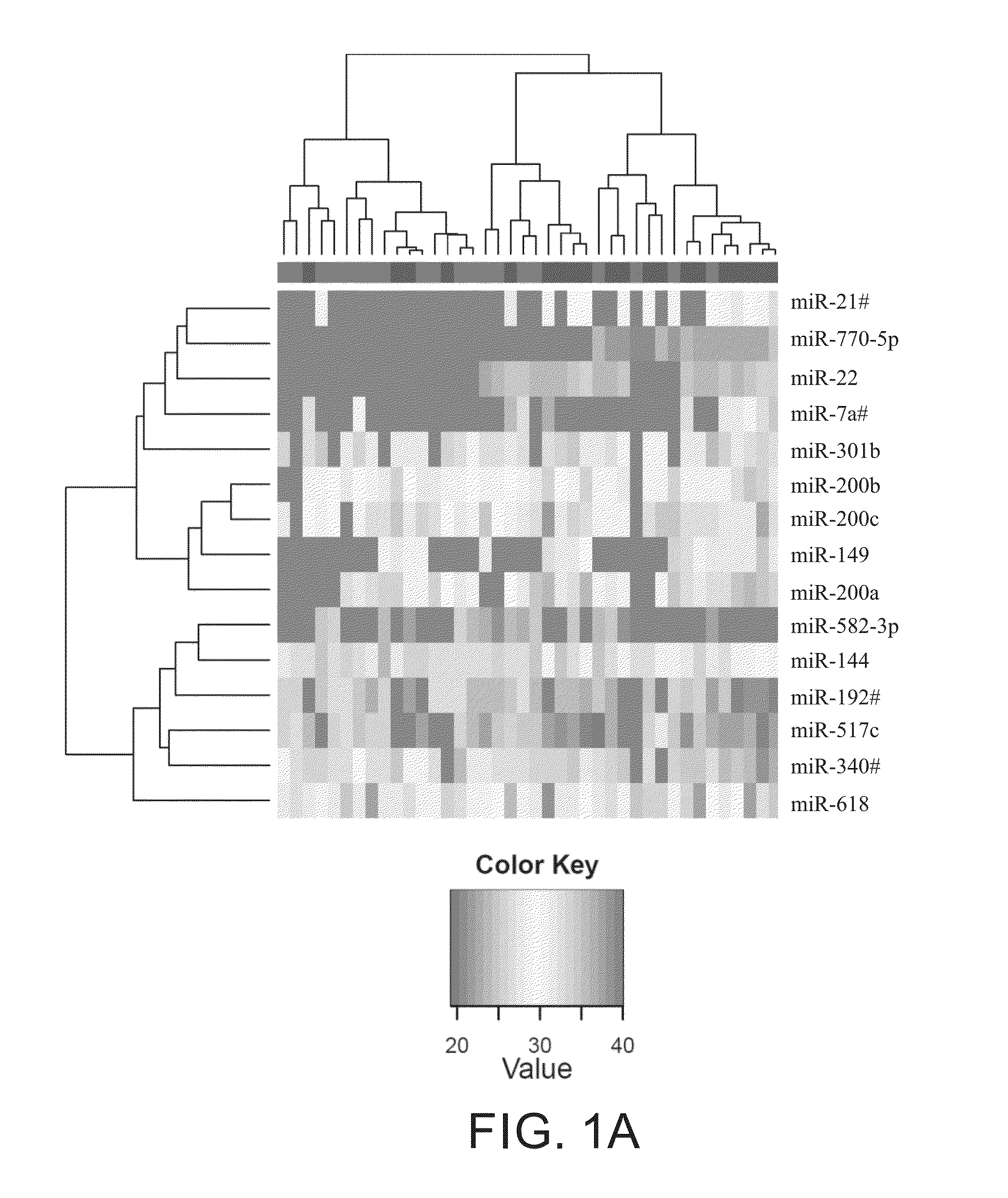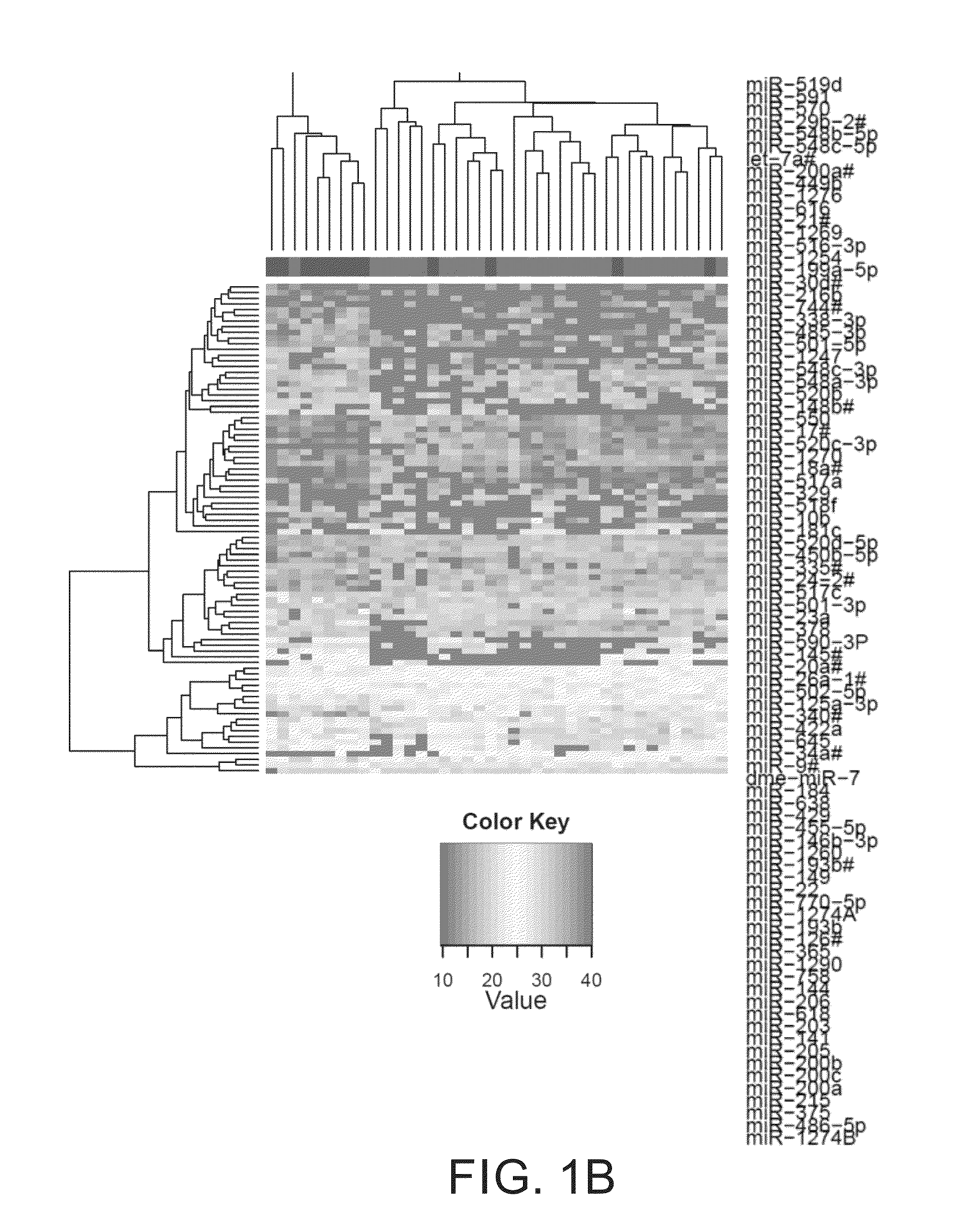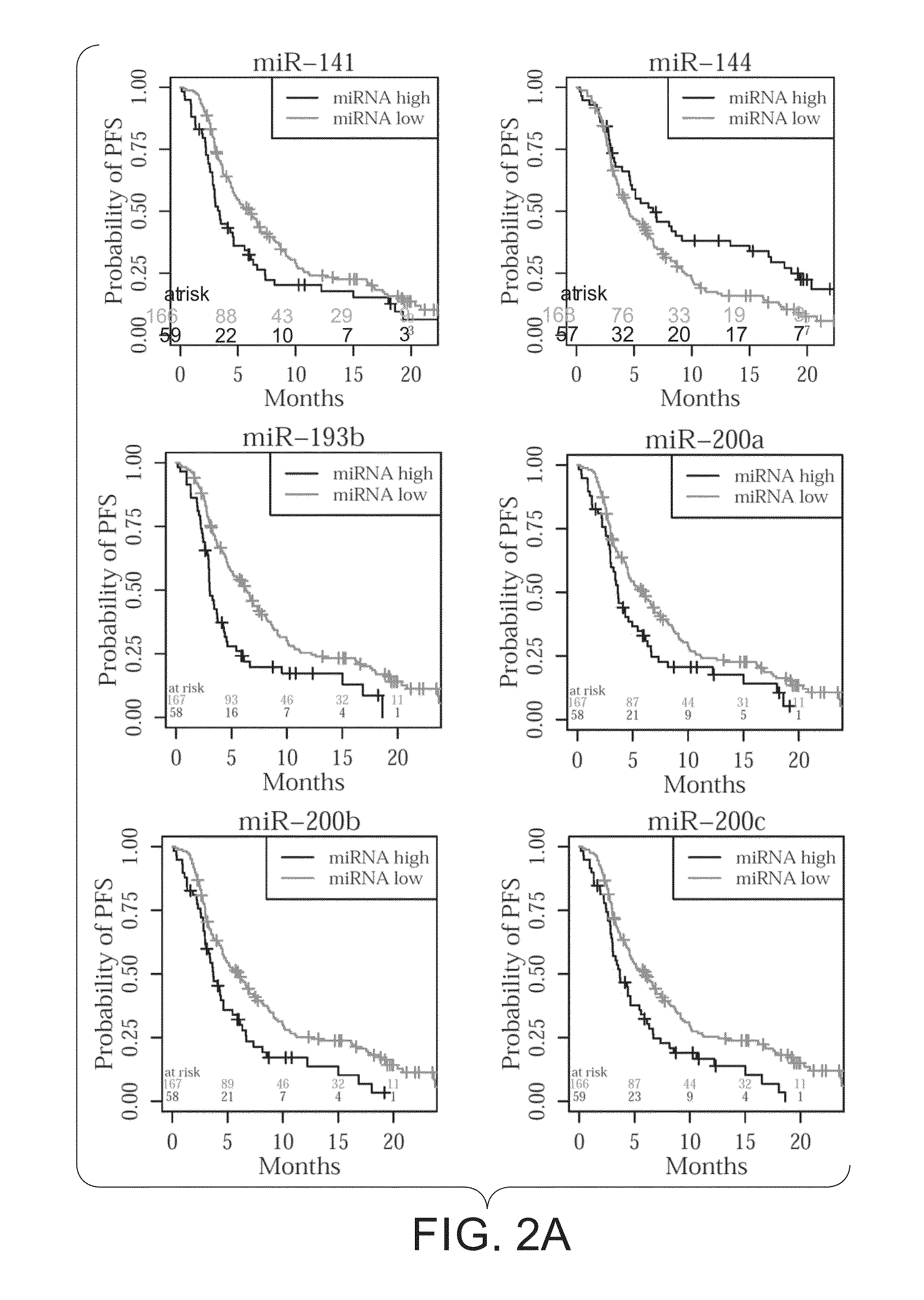CIRCULATING miRNAs AS EARLY DETECTION MARKER AND PROGNOSTIC MARKER
a prognostic marker and mirnas technology, applied in the field of early detection, prognostication and prediction of the onset of metastasis cancer, can solve the problems of limiting the identification of markers to specific types of mbc, unable to identify valuable markers for the early detection of bc, and unable to achieve sensitivity and specificity. achieve the effect of preventing, treating or reducing the onset of metastasis
- Summary
- Abstract
- Description
- Claims
- Application Information
AI Technical Summary
Benefits of technology
Problems solved by technology
Method used
Image
Examples
example 1
Identification of Circulating miRNAs With Potential Prognostic Value
[0079]Profiling of plasma samples from patients with two extreme prognostic outcomes resulted in identification of candidate miRNAs for predicting PFS or OS. After the initial filtering steps to weed out undetected and miRNAs whose levels were invariant across all samples, 199 miRNAs remained which was used for comparisons and clustering. Limma analysis produced 8 miRNAs that were significantly different between cases with good and poor prognosis, whereas 21 miRNAs were significant for the dead-alive comparison. Six miRNAs namely miR-22, miR-144, miR-149, miR-200a, miR-200b, and miR-200c were common hits for both these comparisons. In total 20 miRNAs were chosen for further validation: miR-22, miR-141, miR-144, miR-146b-3p, miR-149, miR-193b, miR-200a, miR-200b, miR-200c, miR-203, miR-215, miR-365, miR-375, miR-429, miR-486-5p , miR-618, miR-758, miR-770-5p, miR-1260, and miR-1274a (FIG. 10). Clustering of samples ...
example 2
Sixteen miRNAs Confirmed to be Significantly Correlated to Survival in MBC Patients
[0080]Candidate miRNAs were first verified in the 40 samples used in the discovery phase by individual TaqMan R assays. miR-146b-3p, miR-149, miR-618, miR-758, and miR-770-5p were found to be present in very low to undetectable levels and hence not tested in further steps. To the list of remaining 15 miRNAs, miR-210 and miR-801 were added as it had already be shown that they are associated with survival in MBC patients in a previous study17. In MBCBL samples, there were in total 187 patients with progression (83%) and 38 without progression (17%); 85 patients who had died (36%) and 149 who were still alive (64%). Logrank tests after stratifying samples based on their miRNA levels revealed 12 miRNAs, miR-141, miR-144, miR-193b, miR-200a, miR-200b, miR-200c, miR-203, miR-215, miR-375, miR-429, miR-801, and miR-1274a to be significantly correlated to PFS (P2).
example 3
Circulating miRNAs Correspond to Survival After One Cycle of Therapy
[0081]To assess if the prognostic ability of the miRNAs was valid even after therapy, miRNA levels were measured in 117 MBC1C samples. Of the 117 patients tested, 88 patients had progression (79%) and 23 had no progression (21%), while 35 (30%) had died and 81 were still alive (70%). Thus, distribution of both PFS and OS were similar to those of MBCBL samples analyzed. A majority of miRNAs were found still associated with survival and the correlation was found to be, in general, stronger in the MBC1C samples with respect to their P-values (P4). However, miR-144, miR-215 and miR-801 were no longer significantly correlated to PFS and OS, and miR-365, miR-486-5p and miR-1260 were no longer significantly correlated to OS after therapy (FIG. 11).
PUM
| Property | Measurement | Unit |
|---|---|---|
| volume | aaaaa | aaaaa |
| volume | aaaaa | aaaaa |
| size | aaaaa | aaaaa |
Abstract
Description
Claims
Application Information
 Login to View More
Login to View More - R&D
- Intellectual Property
- Life Sciences
- Materials
- Tech Scout
- Unparalleled Data Quality
- Higher Quality Content
- 60% Fewer Hallucinations
Browse by: Latest US Patents, China's latest patents, Technical Efficacy Thesaurus, Application Domain, Technology Topic, Popular Technical Reports.
© 2025 PatSnap. All rights reserved.Legal|Privacy policy|Modern Slavery Act Transparency Statement|Sitemap|About US| Contact US: help@patsnap.com



